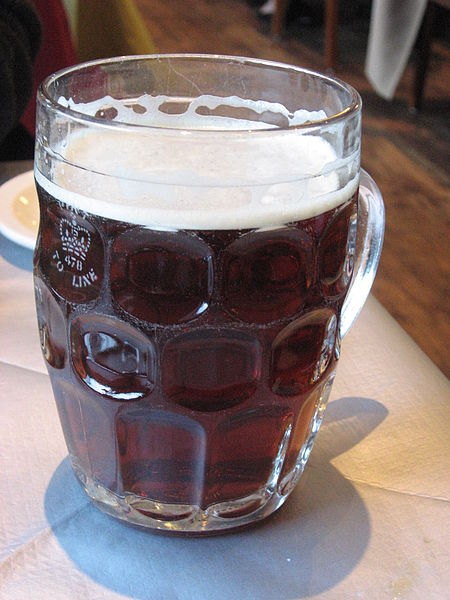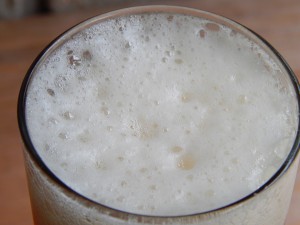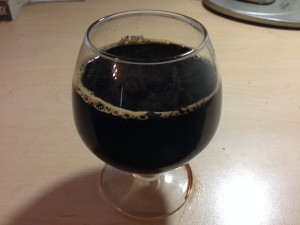[This is the second article in a series on brewing session beers. In the first, I discusssed sparging the grain bed for a low-gravity beer.]
In the past, a common problem among homebrewers was pitching an inadequte amount of yeast. The original containers of liquid yeast did not contain enough yeast cells to yield an ordered fermentation of 5.0 gallons (19 L) of average strength or higher wort. They “would work,” but start times were longer than they should have been and sometimes the beer did not attenuate fully. However, some brewers did not want to go through the hassle of making a yeast starter.
These days, homebrewers have access to liquid yeast packs that have 100 billion cells or 200 billion cells. And of course, we’ve always had access to dried yeast packets that have a large cell count. An 11.5-gram packet of dried yeast, for example, contains over 200 billion cells. And all that is great — except when you are brewing a session beer. For a low-gravity beer, the amount of cells in a commercial yeast packet might actually be too high.
Generally, the problems associated with overpitching are less troublesome than the problems associated with underpitching. However, in a session beer, overpitching can detract from the beer’s character. Overpitched beers may attenuate to a greater degree than you want. With a session beer, you already expect a low finishing gravity because of the low starting gravity. So “extra” attenuation is unwelcome. You can moderate this somewhat by adding more crystal or caramel type malts to your recipe or mashing for a shorter time at a higher temperature. However, higher pitching rates also increase your overall attentuation.
In addition, the yeast character from ale strains is mostly developed in the early growth phase of the beer fermentation. Fewer esters are produced once the yeast has reached their maximum density and are fermenting compared to when the population is still growing. So, overpitching can minimize the yeast character of a session beer. And given that many session beers are low-gravity, English-style ales, this character will be missed. Even in a non-English-style beer, some yeast character in a low-gravity beer gives it more overall aroma and flavor — something that can be lacking if the beer is not brewed well.
For a low-gravity ale, I recommend pitching even less than the typical ale calls for. The general rule of thumb for ales is to pitch a million cells per mL per °Plato. So, for example, 5.0 gallons (19 L) of 12 °Plato (SG 1.048) beer — one that should produce a beer around 5.0% ABV — would need 227 million yeast cells. However, 5.0 gallons of a 9 °Plato (SG 1.036) beer — one that should produce a 3.5% beer — only needs 170 million cells. Pitching 200 million cells to a beer like this would not be drastically overpitching, and you’d probably get away with it. However, if you wanted to purposely underpitch to develop more yeast character, 130 million cells would be a better target. That’s 75% or the amount the general rule would suggest (and in line with the pitching rate of many commercially produced ales).
Fortunately, it is easier to deal with having too much yeast than too little. If you have a 200 billion yeast cell container of yeast, and you want your pitching rate to be less than that, just pitch part of the package. If you wanted 130 million cells, for example, you want to pitch (130 million cells/200 million cells =) 0.65 or 65% of the yeast in a 200 billion cell package. Be sure to shake the package so that the yeast is evenly distributed before dividing it. You could perhaps utilize the unused yeast to make bread, or another yeast starter, if you were concerned about wasting it.
Alternatively, you can use a yeast pitching calculator to determine the size yeast starter that would be required. Then, pitch a small amount of yeast to the starter — NOT the whole pack — and let that grow. Recall that 8.0 fluid ounces (240 mL) of yeast slurry is generally adequate for 5.0 gallons (19 L) of 12 °Plato (SG 1.048) beer. So, if you were making a 1.0 qt. (~1 L) yeast starter, about 1/20 of that volume — 0.4 fluid ounces (12 mL) of yeast slurry would be required. I nearly always make a yeast starter because I can assess the health of the yeast based on the vigor with which they ferment the starter wort.
Brewing a high-quality low-gravity session beer requires every bit as much attention as brewing a big beer. The “tricks” are just different. For starters, don’t use too much sparge water on your grain bed nor pitch too much yeast to your wort. More session beer posts are in the works.







Recent Comments